How to plant a juniper in open ground and take care of it in the future: growing rules
Somehow, quite separately, among other evergreens in the garden, the juniper is valued, whose very presence heals many diseases. The plant, friendly to people, is one of the favorite crops that fills the air with life-giving resins and amazes with its beauty, dear to the heart, perfectly combined with many green friends.
Juniper is a rather unpretentious coniferous plant. But in order to properly plant it and take care of it, you need to know a few basic rules.
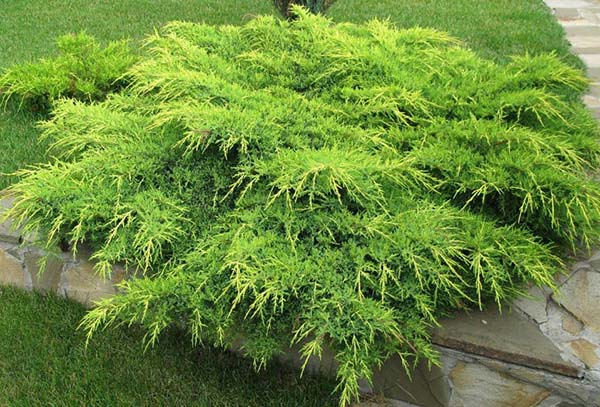
Content
Types (types) and varieties of juniper
Among junipers, their following shapes and sizes can be distinguished:
- Tree-like;
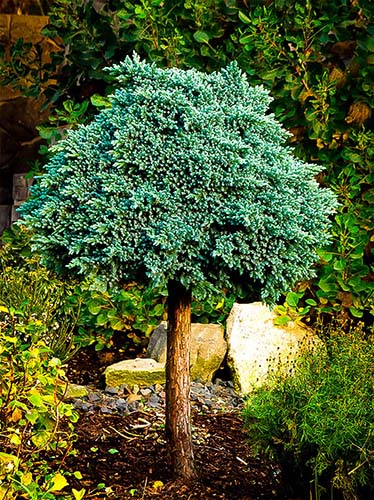
- Columnar;
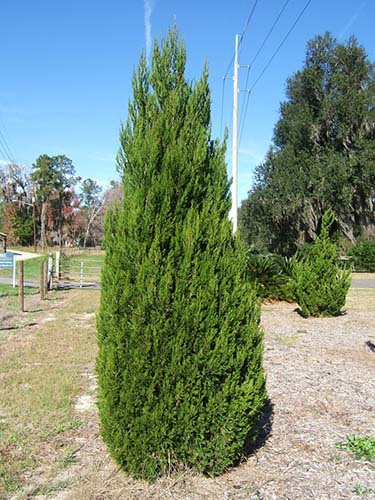
Virgin spartan - Shrubby (with spreading bushes);
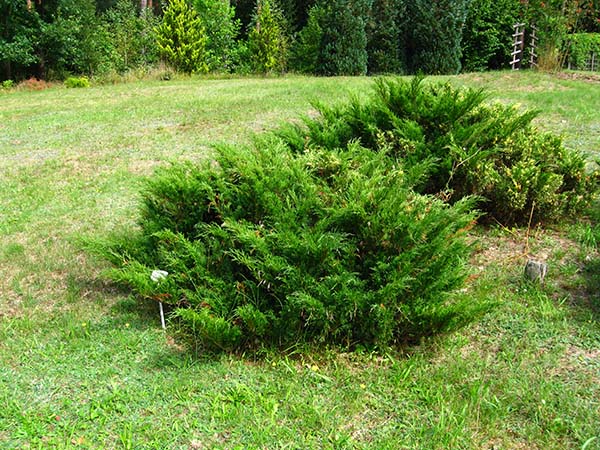
Cossack Sabina - Low-growing (creeping, ground cover).
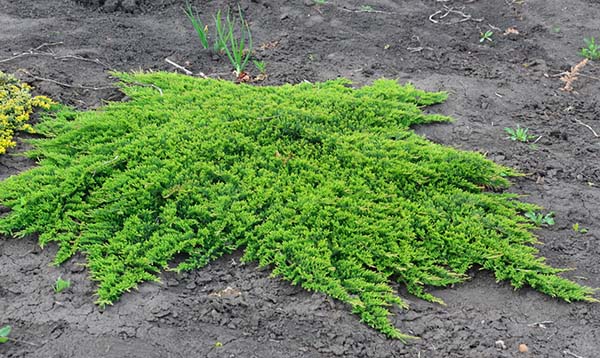
Horizontal Prince of Wales
The most popular types and varieties of juniper are:
- Ordinary (Depressa Aurea, Meyer, Green Carpet, Horstman, Repanda, Arnold);
- Virginian or North American (Gray Oul, Skyrocket, Hetz, Glauka);
- Cossack (Variegata, Blue & Gold, Tamariscifolia, Rockery Jam, Glauka, Sabina);
- Horizontal or outstretched (Lime Glow, Wiltoni, Blue Chip, Prince of Wales);
- Chinese (Strickta, Kurivao Gold, Spartan, Variegata);
- Rocky (Blue Arrow, Blue Haven, Munglow);
- Scaly (Dream Joy, Blue Star, Blue Carpet).
In more detail you can get acquainted with the appearance of different junipers in the following videos or in the last paragraph "What is it better to plant - a juniper or a thuja? "
Video: types and varieties of junipers
When and how to plant a juniper outdoors
Landing dates
The main thing when planting conifers is to keep the earthy clod around the roots moist, and you can plant junipers in spring, autumn, and even summer.
Note! If you decide to plant a juniper in the summer, then the young seedling should be shaded and watered more often (but not overflowed!) Throughout the summer.
But still, the optimal time for planting junipers is spring, around April-May, when the ground warms up a little. But it is often planted in autumn in September-October.
How to choose the right seedling
Warning! Never buy seedlings from random people. As a rule, they have a bare root system, and such juniper seedlings do not actually survive.
It is better to purchase cypress seedlings in garden centers. In them, junipers are sold in special containers, in other words, their root system is closed and well developed.
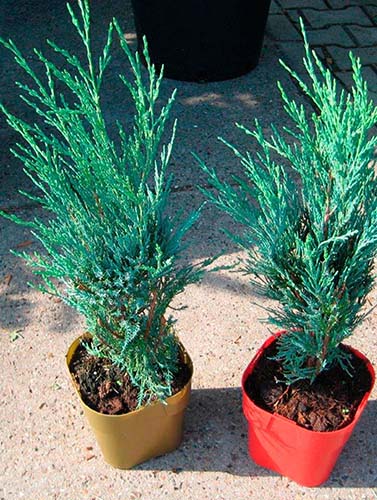
As for the age of the seedling, it is optimal to purchase 3-4 years old.
Also, when buying a seedling, you should pay special attention to the tips of the needles. They should be green and elastic (bendable). If on examination you notice that the tips are dry and breaking, then such a plant is not worth buying. It is quite obvious that it is sick or has been overdried, which means that the likelihood that it will take root well is quite low.
Place in the garden
After you select and buy a seedling, you will need to find the right place to plant it in your summer cottage garden. Juniper loves sunny and well-lit places. Growing under the sun, it will acquire all its best properties. If you plant it in deep shade, the crown will begin to deform, become loose. However, its varieties such as Virginia and ordinary, can grow in light partial shade.
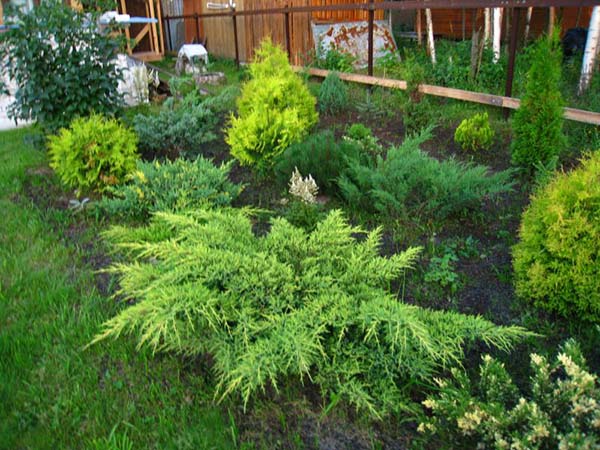
Important! The Chinese juniper tends to burn strongly at the end of winter or in strong winds, so it is better to plant it in a quiet place, or next to taller conifers.
If you want to plant several seedlings side by side, then it is advisable to do this at a distance of 50 to 200 centimeters, depending on the size (shape and type) of the juniper seedling.
Planting pit and soil
The diameter of the planting pit for a juniper should exceed the earthen clod of the seedling by about 2-3 times, and in depth it should be about 50-70 centimeters.
Junipers do not tolerate waterlogging, therefore, a drainage layer must be laid at the bottom of the planting pit. You can use broken bricks, stones, pebbles, rubble, or gravel as drainage. Then a small layer of sand should be poured.
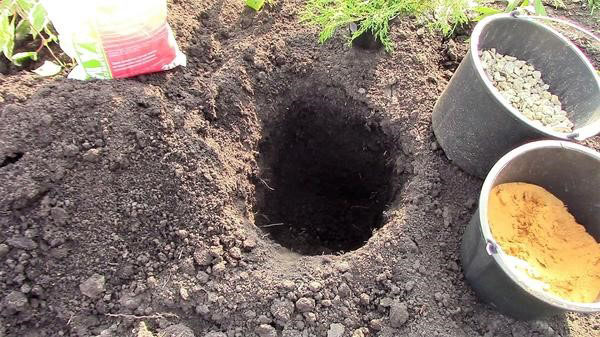
This ephedra cannot be called a plant demanding on the soil, but it is still recommended to fill the planting hole with fertile soil. For example, you can prepare such a soil mixture: 2 parts of peat, 1 part of soddy clay soil and 1 part of river sand. Or this: 2 parts of turf or leafy land, 1 part of peat and 1 part of sand.
Clarification! Each juniper variety has slightly different soil requirements. For example, if you are planting Virginiathen put more turfy clay land, if Siberian - sand, Cossack - add wood ash, dolomite flour or lime (to reduce the acidity of the soil).
Immediate phased disembarkation
Step-by-step instructions for planting a juniper in open ground:
- Choose the sunniest and most well-lit place on the site.
- Dig the required planting hole and lay a drainage layer on the bottom, sprinkling it with sand.
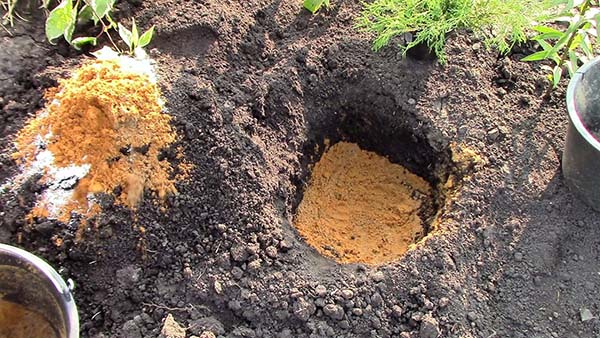
- Prepare a soil mixture depending on the species and fill the hole, but not completely.
- Carefully remove the seedling from the container, being careful not to fall apart, and transfer to the center of the pit. The root collar should be slightly higher than the level of the hole (5-8 centimeters). When the soil settles down after watering, the seedling will drop to the right place.
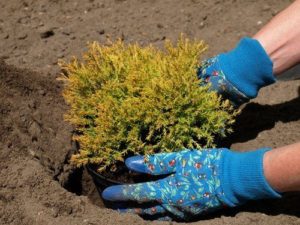
- Cover the entire space around the seedling with soil mixture and tamp it lightly with your hands so that there are no air voids.
- Thoroughly spill the trunk circle evenly from all sides.
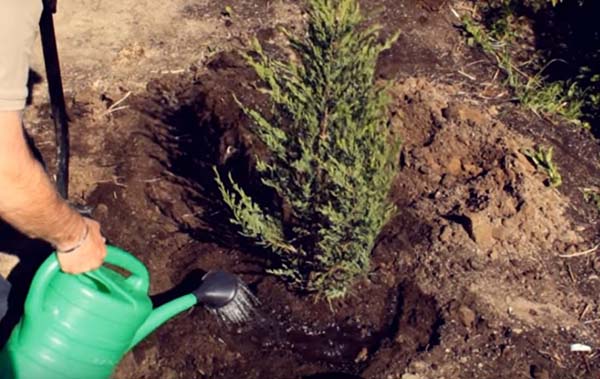
- When the moisture is absorbed, the earth will sag a little, it will be necessary to fill it up.
- Cover the trunk circle to trap the rapid evaporation of moisture. You can take peat, wood or pine chips (bark) as mulch, sawdust or even dry leaves. The mulch layer should be about 5-10 centimeters.
Video: planting and caring for a juniper
Outdoor Juniper Care
To preserve the beauty of this ephedra, so that the crown of this tree is fluffy and dense, and the color remains throughout the season, the juniper must be properly cared for.
Newly planted seedlings require plenty of moisture and should be watered at least once a week.
Adults and well established plants watering practically unnecessary. Unless the summer will be hot and dry, then 2-3 times per season it is still worth watering, pouring 1-3 buckets at a time, depending on the size of the bush.
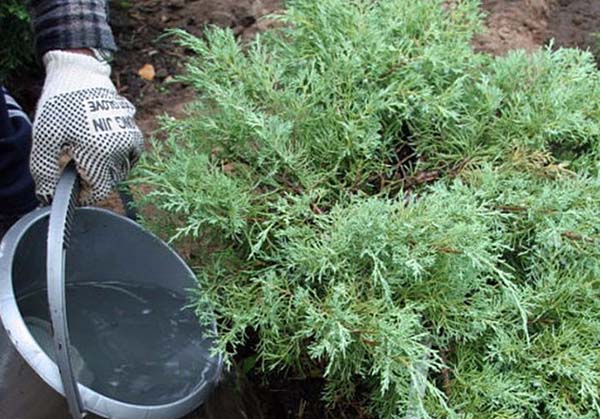
Remember! Juniper does not tolerate dry air very well, so it will respond well to periodic spraying with water, sprinkler irrigation.
Juniper not required frequent and abundant feeding, especially since he does not need organic matter. Except that young plants should be fed in spring - in the month of April-May. Take 30-40 grams of nitroammophoska, potassium nitrate or other complex mineral fertilizer similar in composition and scatter it around the trunk circle, and then spill it well with water.
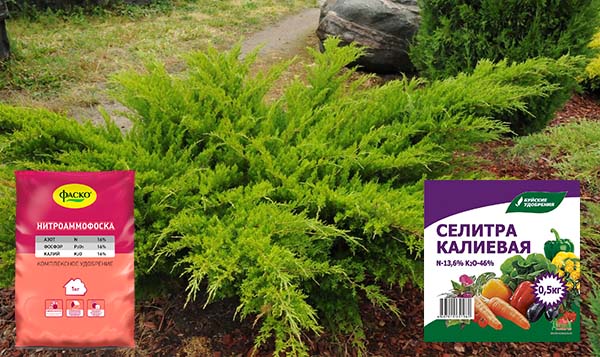
As such pruning the juniper is not required (another matter is cutting and shaping the plant), except that in early spring you need to sanitize, in other words, cut off all dried and broken branches (although some gardeners do this and late autumn).
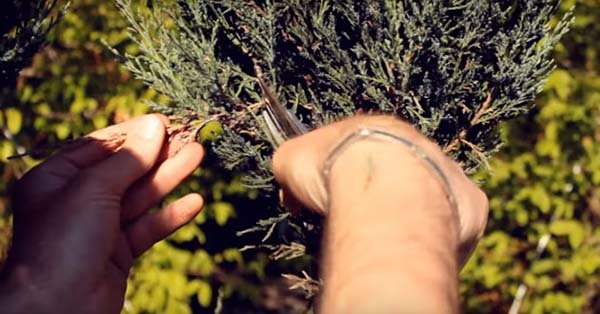
If you notice that some branch has deviated to the side, but is still alive, then it is not necessary to cut it off, you can simply pull it up with a string. After a certain time, it will return to its original position again.
Important! The essential oil in juniper resin is caustic, so be sure to wear heavy canvas gloves and oversleeves before cutting. Otherwise, long-term irritation may develop on the hands.
In caring for junipers, it plays a vital role antifungal treatments... They need to be done regularly, rather than waiting for the fungus to appear. It is especially important to spray it with fungicides (for example, the Topsin-M systemic fungicide is excellent) after warm and humid weather, as well as in late autumn.
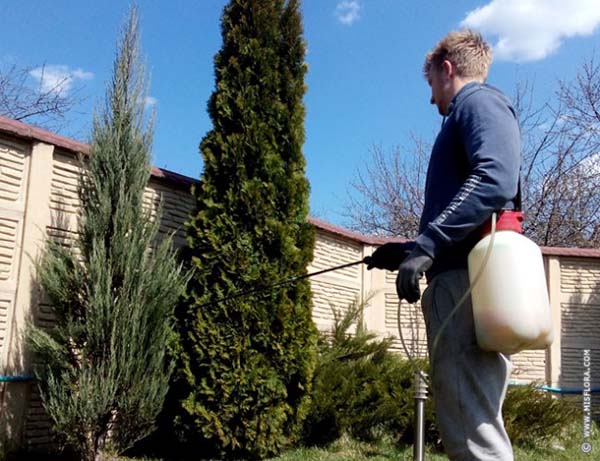
By the way! In late winter and early spring, juniper can get sunburn, in other words, it canburn out (this often happens in Siberia), so it should be shaded. For example, throwing burlap on the plant or installing screens. Only in no case not should use agrofibre, because it just transmits ultraviolet light.
Video: proper care for junipers in the open field
Important! You can find all the detailed information about preparing junipers for winter (shelter, pruning) in this material.
What is better to plant - a juniper or a thuja?
Many gardeners, when they begin to think about what kind of ephedra is better to plant on their site, cannot decide whether it is a juniper or is it all the same. Let's try to understand the differences and advantages of planting each of them.
Both juniper and thuja belong to the same family - Cypress, so they are very similar in many ways.
Pay attention! You can read detailed information on planting, growing and caring for thuja in this article.
By shape and size
For example, thuja western Columna is very similar to the rocky juniper of Blue Arrow, they have equally smooth and clear high silhouettes.
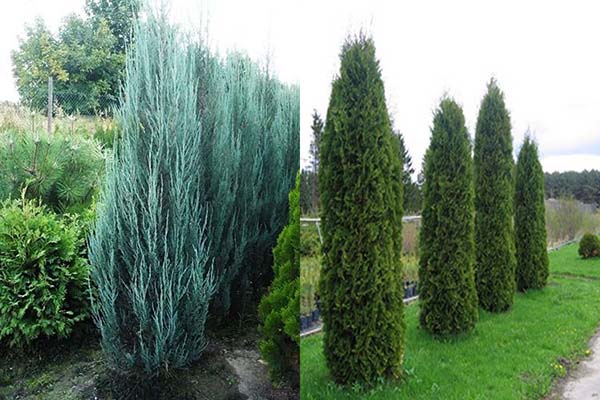
And the juniper of the Chinese Strikt, with a skillful haircut, can be made completely similar to the conical western thuja Smaragd.
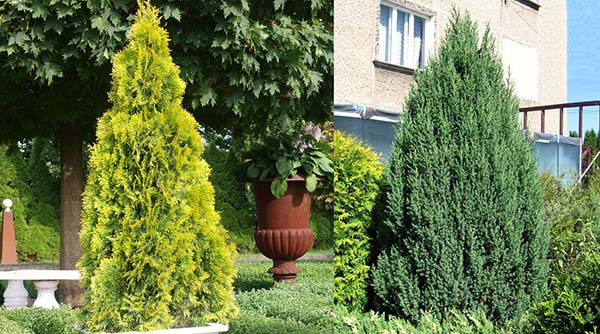
If the spherical junipers have not yet been bred, then the thuja is quite widely represented - this is Globoza, and Woodwardy, and miniature Teddies.
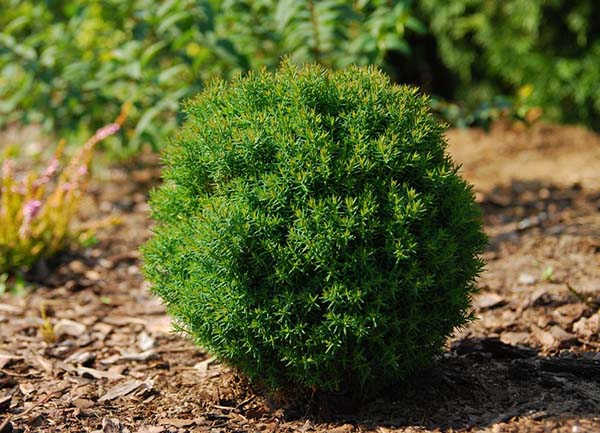
But junipers have a huge assortment of spreading and creeping crowns. These include the following: Cossack, Virginian Hetz, Scaly Blue Carpet.
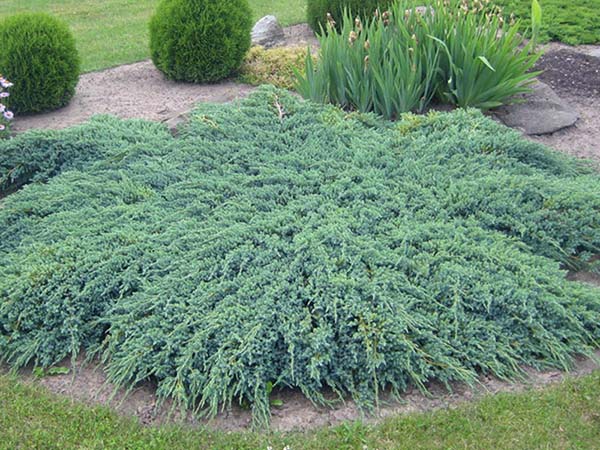
By color (color)
In addition to the natural (standard) green color, juniper and thuja today can be in fact any color: green, blue, and yellow.
For example, Tuya Miriyam is a green thuja with yellow tips.
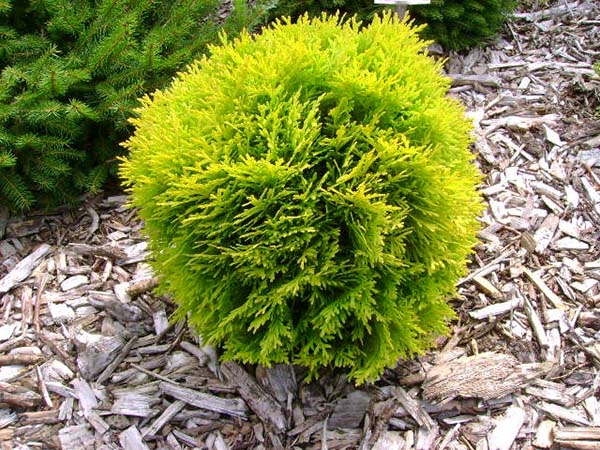
The Blue & Gold Juniper is a plant with blue and yellow tops.
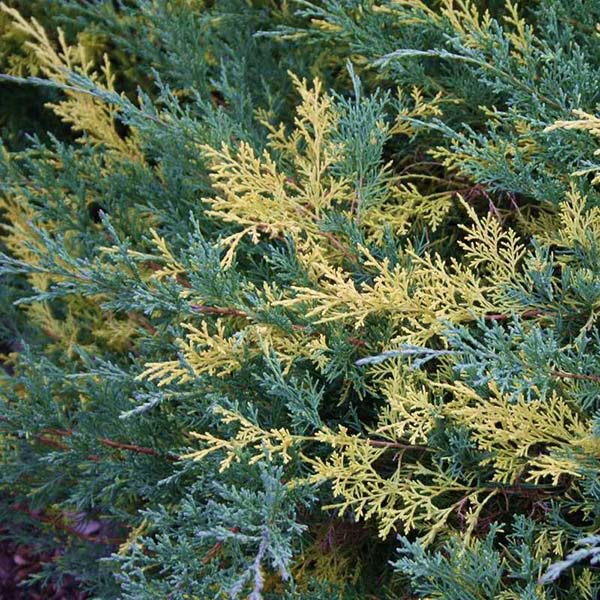
For use in landscape design
Junipers, as a rule, are planted either as single plants, or in "loose" groups of several bushes.
The use of juniper as a hedge is rather limited: the price is high and grows very slowly, so thuja varieties such as Columna and Brabant are better suited for this.
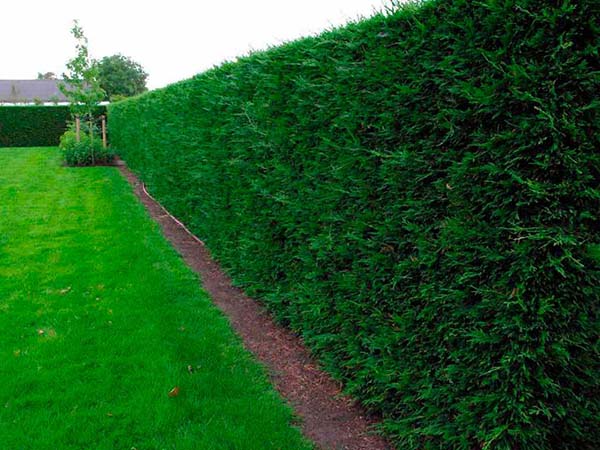
If you need to decorate a slope on your personal plot, decorate an alpine slide or rockery, then creeping or ground cover varieties of juniper will be the best choice.
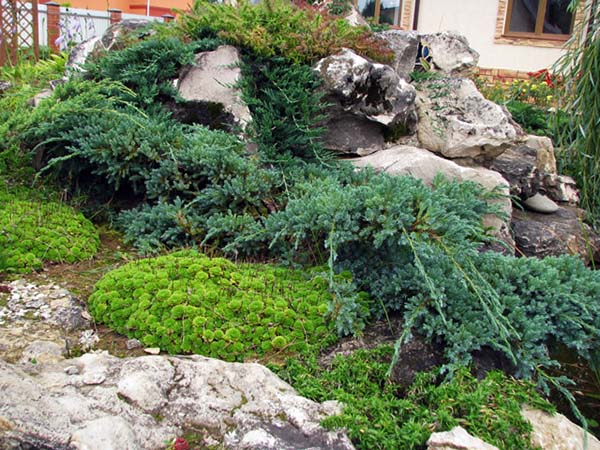
According to the conditions of growing and care
Thuja perfectly tolerates the dusty and gassed air of city streets, therefore it is very often used for landscaping large cities and industrial centers. On the contrary, junipers will suffer and waste away from dusty and gas-polluted air, therefore they are usually planted only in suburban areas.
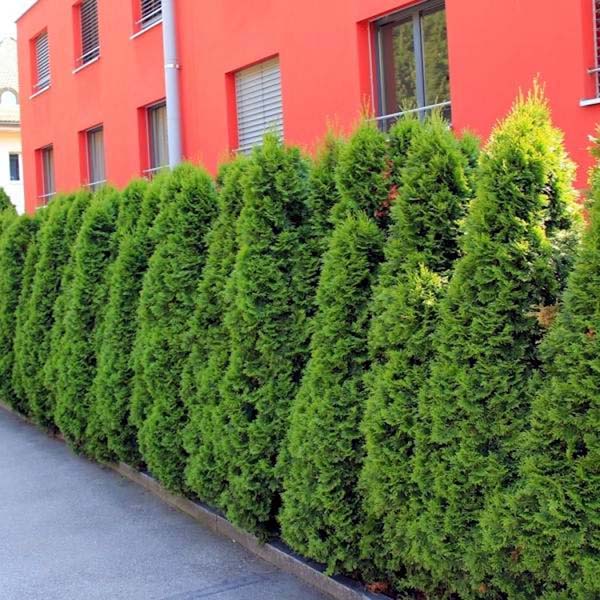
Juniper is an exceptionally light-loving, frost-resistant, drought-resistant and not demanding plant for soil conditions. This is due to the fact that its root system goes several meters into the soil and from there receives all the necessary nutrition.
Thuja is a moisture and light-loving plant that can grow relatively successfully in the shade, but it is noticeably more demanding on soils. If the land is infertile and poor, then for normal development the plant will need to be additionally regularly fed.
In general, both thuja and juniper are considered rather unpretentious conifers. However, young, recently planted seedlings for the winter should be insulated and covered, especially if you live in a cold climate.
By useful properties
Juniper is healthier than thuja. Because the phytoncides secreted by its needles kill almost all pathogenic microbes. Traditional medicine is often used cone-berries of juniper, which have diuretic and disinfectant properties. It is useful to chew 1 berry per day during a flu epidemic, this will significantly reduce the risk of illness. These berries are also used in cooking: they make kvass, beer and gin, use them for smoking meat (6-8 pieces per 1 kg of meat), and also make juniper brooms for a bath.
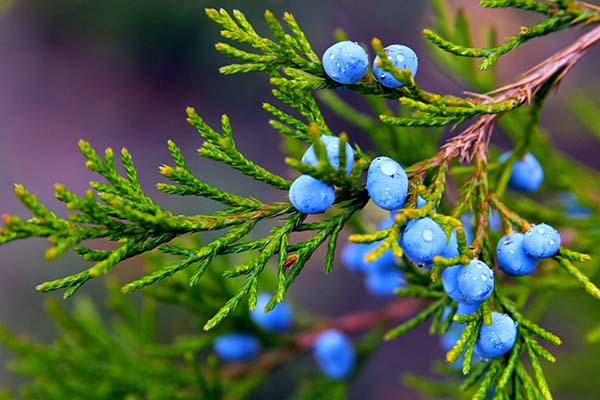
By the way! Junipers can live up to 1000 years, while thujas tend to live up to a maximum of 100 years.
Video: which is better to plant - juniper or thuja
Subject to all the rules for planting and caring for junipers in the open field, you will have this wonderful plant in your summer cottage, which will delight you with its appearance and make the atmosphere in your garden healing and wholesome.
Video: the secrets of growing and the features of caring for juniper

